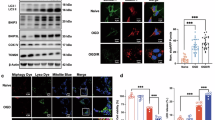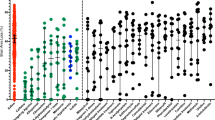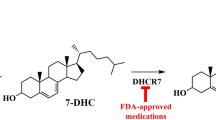Abstract
Reoxygenation and reperfusion after severe hypoxia and ischemia (HI) contribute substantially to birth asphyxia-related brain injury. Excess production of free radicals via metabolization of arachidonic acid, xanthine oxidase, and non-protein-bound iron play an important role. Cerebral reperfusion injury is characterized by a decrease in perfusion, oxygen consumption, and electrical activity of the brain. Reduction of free radical production may attenuate these features. We therefore induced severe HI in 35 newborn lambs, and upon reperfusion the lambs received a placebo [control(CONT), n = 7], the cyclooxygenase inhibitor indomethacin (INDO, 0.3 mg/kg/i.v., n = 7), the xanthine oxidase inhibitor allopurinol(ALLO, 20 mg/kg/i.v., n = 7), the iron chelator deferoxamine (DFO, 2.5 mg/kg/i.v., n = 7), or a combination of these drugs (COMB,n = 7). In each group changes (%) from pre-HI values were investigated for brain perfusion [measured by carotid artery flow(Qcar, mL/min)], (relative) cerebral O2 metabolism(CMRO2), and electrocortical brain activity (ECBA, µV) at 15, 60, 120, and 180 min post-HI. Qcar decreased significantly at 120 and 180 min post-HI in CONT (p < 0.05), but not in INDO, ALLO, DFO, and COMB groups. CMRO2 decreased significantly in CONT at 60 min post-HI (p < 0.05), remained stable in DFO and INDO, and was significantly higher in ALLO and COMB (p < 0.05) at 120 and 180 min post-HI. ECBA was significantly lower in CONT during the whole post-HI period (p < 0.05), ECBA in INDO and COMB were significantly decreased at 60 and 120 min post-HI (p < 0.05), but recovered afterward, whereas DFO and ALLO remained stable during the post-HI period. In conclusion preservation of Qcar and CMRO2, and recovery of ECBA occurred after treatment with INDO, ALLO, and DFO; combination of these drugs did not have an additional positive effect.
Similar content being viewed by others
Log in or create a free account to read this content
Gain free access to this article, as well as selected content from this journal and more on nature.com
or
Abbreviations
- ALLO :
-
allopurinol
- CMR O2 :
-
(relative) cerebral metabolic rate of oxygen
- COMB :
-
combination therapy
- DFO :
-
deferoxamine
- CONT :
-
control
- ECBA :
-
electrocortical brain activity
- HI :
-
hypoxia-ischemia
- INDO :
-
indomethacin
- P ao :
-
aortic blood pressure
- Q car :
-
carotid artery flow
References
Saugstad OD, Aasen AO 1980 Plasma hypoxanthine concentrations in pigs: a prognostic aid in hypoxia. Eur Surg Res 12: 123–129.
McCord JM 1985 Oxygen derived free radicals in post ischemic tissue injury. N Engl J Med 312: 159–163.
Palmer C 1995 Hypoxic-ischemic encephalopathy: therapeutic approaches against microvascular injury and role of neutrophils, PAF, and free radicals. Clin Perinatol 22: 481–517.
Wolfe L 1982 Eicosanoids: prostaglandins, thromboxanes, leukotrienes and other derivatives of carbon 20 unsaturated fatty acids. J Neurochem 38: 1–14.
Palmer C, Roberts RL, Bero C 1994 Deferoxamine posttreatment reduces ischemic brain injury in neonatal rats. Stroke 25: 1039–1045.
Thiringer K, Hrbek A, Karlsson K, Rosen KG, Kjellmer I 1987 Postasphyxial cerebral survival in newborn sheep after treatment with oxygen free radical scavengers and a calcium antagonist. Pediatr Res 22: 62–66.
Pourcyrous M, Parfenova H, Bada HS, Korones SB, Leffler CW 1997 Changes in cerebral cyclic nucleotides and cerebral blood flow during prolonged asphyxia and recovery in newborn pigs. Pediatr Res 41: 617–623.
Dorrepaal CA, Shadid M, Steendijk P, Van Der Velde ET, Van De Bor M, Baan J, Van Bel F 1997 Effect of posthypoxic-ischemic inhibition of nitric oxide synthesis on cerebral blood flow, metabolism and electrocortical brain activity in newborn lambs. Biol Neonate 72: 216–226.
Williams CE, Gunn AJ, Mallard EC, Gluckman PD 1991 Outcome after ischemia in the developing sheep brain: an electro-encephalographic and histological study. Ann Neurol 31: 14–21.
Hossmann KA 1993 Ischemia mediated neuronal injury. Resuscitation 26: 225–235.
Hurn PD, Koehler RC, Blizzard KK, Traystman J 1995 Deferoxamine reduces early metabolic failure associated with severe cerebral ischemic acidosis in dogs. Stroke 26: 688–695.
May NDS 1970 The Anatomy of Sheep: A Dissection Manual. University of Queensland press, Queensland, 133–266.
Dobsen AD, Sellers AF, McLeod FD 1986 Performance of a cuff-type blood flowmeter in vivo. J Appl Physiol 21: 1642–1648.
Prior PF 1979 Monitoring Cerebral Function: Long Term Recordings of Electrical Activity. North Holland Biomedical Press, Amsterdam, 45–301.
Hellstrom-Westas L, Rosen I, Svenningsen NW 1995 Predictive value of early continuous amplitude integrated EEG recordings on outcome after severe birth asphyxia in full term infants. Arch Dis Child 72:F34–F38.
Van Bel F, Roman C, Klautz RJM, Teitel DF, Rudolph AM 1994 Relationship between brain blood flow and carotid arterial flow in the sheep fetus. Pediatr Res 35: 329–333.
Iwamoto HS, Teitel DF, Rudolph AM 1987 Effect of birth-related events on blood flow distributions. Pediatr Res 22: 634–640.
Jones MD, Traystman RJ, Simmons MA, Molteni RA 1981 The effects of changes in arterial O2 content in cerebral blood flow in lamb. Am J Physiol 240:H209–H251.
White PF, Way WL, Trevor AJ 1982 Ketamine-its pharmacology and therapeutic uses. Anesthesiology 56: 119–136.
Morley P, Hogan MJ, Hakim AM 1994 Calcium-mediated mechanisms of ischemic injury and protection. Brain Pathol 4: 37–47.
Fellman V, Raivo KO 1997 Reperfusion injury as the mechanism of brain damage after perinatal asphyxia. Pediatr Res 41: 599–606.
Halliwell B 1992 Reactive oxygen species and the cerebral nervous system. J Neurochem 59: 1609–1623.
Vanucci RC 1990 Experimental biology of cerebral hypoxia-ischemia: relation to perinatal brain damage. Pediatr Res 27: 317–326.
Hudome S, Palmer C, Roberts RL, Mauger D, Housman C, Towfighi J 1997 The role of neutrophils in the production of hypoxic-ischemic brain injury in the neonatal rat. Pediatr Res 41: 607–616.
Dorrepaal CA, Berger HM, Benders MJNL, Van Zoeren-Grobben D, Van De Bor M, Van Bel F 1996 Nonprotein bound iron in postasphyxial reperfusion injury of the newborn. Pediatrics 98: 883–889.
Pourcyrous M, Leffler CW, Bada HS 1993 Brain superoxide generation in asphyxiated piglets and the effect of indomethacin at therapeutic doses. Pediatr Res 34: 366–369.
Moorhouse PC, Grootveld M, Halliwell B, Quinlan JG, Gutteridge JMC 1987 Allopurinol and oxypurinol are hydroxyl radical scavengers. FEBS Lett 213: 23–28.
Ko KM, Godin DV 1990 Inhibition of transition metal ion-catalysed ascorbate oxidation and lipid peroxidation by allopurinol and oxypurinol. Biochem Pharmacol 40: 803–809.
Palmer C, Vannucci RC, Towfighi J 1990 Reduction of perinatal hypoxic ischemic brain damage with allopurinol. Pediatr Res 27: 332–336.
Grice SC, Chappell ET, Prough DS, Whitley JM, Su M, Watkins WD 1987 Ibuprofen improves cerebral blood flow after global cerebral ischemia in dogs. Stroke 18: 787–791.
Johshita H, Asano T, Hanamura T, Takakura K 1989 Effect of indomethacin and a free radical scavenger on cerebral blood flow and edema after cerebral artery occlusion in cats. Stroke 20: 788–794.
Tasdemiroglu E, Macfarlane E, Wei EP 1992 Pial vessel caliber and cerebral blood flow become dissociated during ischemia-reperfusion in cats. Am J Physiol 263:H533–H538.
Van Bel F, Dorrepaal C, Benders MJNL, Zeeuwe P, Van De Bor M, Berger HM 1993 Changes in cerebral hemodynamics and oxygenation in the first 24 hours after birth asphyxia. Pediatrics 92: 365–371.
Sarnat H, Sarnat M 1976 Neonatal encephalopathy following fetal distress. Arch Neurol 33: 696–705.
Van Bel F, Klautz RJM, Steendijk P, Schipper IB, Teitel DF, Baan J 1993 The influence of indomethacin on the autoregulatory ability of the cerebral vascular bed in the newborn lamb. Pediatr Res 34: 178–181.
Klautz RJM, Van Bel F, Teitel DF, Steendijk P, Baan J 1993 Myocardial perfusion and performance after indomethacin administration. Pediatr Res 33: 295–301.
Van Bel F, Shadid M, Dorrepaal CA, Fontijn J, Monteiro L, Van De Bor M, Berger HM 1998 Effect of allopurinol on postasphyxial free radical formation, cerebral hemodynamics and electrical brain activity. Pediatrics 101: 185–195.
Saugstad OD 1996 Role of xanthine oxidase and its inhibitor in hypoxia: reoxygenation injury. Pediatrics 98: 103–107.
Fordor JR, McClanahan TB, Gallagher KP, Hedlund BE, Hallaway PE, Shlafer M 1990 Hemodynamic effects of intraarterial administration of deferoxamine or deferoxamine-pentafraction conjugate to conscious dogs. J Cardiovasc Pharmacol 16: 742–749.
deLemos RA, Roberts RJ, Coalson JJ, deLemos JA, Null DM, Gerstmann DR 1990 Toxic effects associated with the administration of deferoxamine in the premature baboon with hyaline membrane disease. Am J Dis Child 144: 915–919.
Author information
Authors and Affiliations
Additional information
Supported by a grant from the Dutch Heart Association (M.S.); Sub No. 93.101.
Frank van Bel, M.D., Ph.D., Wilhelmina Children's Hospital, Department of Neonatology, PO Box 18009, 3501 CA Utrecht, The Netherlands.
Rights and permissions
About this article
Cite this article
Shadid, M., Moison, R., Steendijk, P. et al. The Effect of Antioxidative Combination Therapy on Post Hypoxic-Ischemic Perfusion, Metabolism, and Electrical Activity of the Newborn Brain. Pediatr Res 44, 119–124 (1998). https://doi.org/10.1203/00006450-199807000-00019
Received:
Accepted:
Issue date:
DOI: https://doi.org/10.1203/00006450-199807000-00019
This article is cited by
-
Neuroprotective Effects of Indomethacin and Aminoguanidine in the Newborn Rats with Hypoxic-Ischemic Cerebral Injury
Neurochemical Research (2005)
-
Neuroprotectieve behandelingsstrategieën na perinatale hypoxie-ischemie
Tijdschrift voor kindergeneeskunde (2003)



